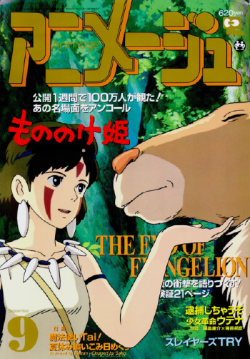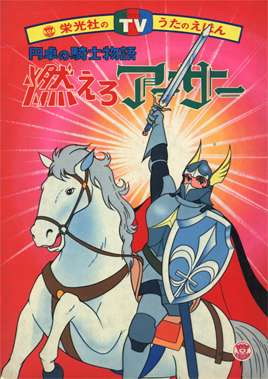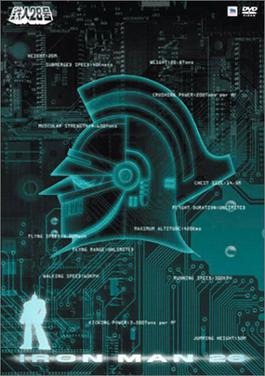Related Research Articles

Anime is hand-drawn and computer-generated animation originating from Japan. Outside Japan and in English, anime refers specifically to animation produced in Japan. However, in Japan and Japanese, anime describes all animated works, regardless of style or origin. Many works of animation with a similar style to Japanese animation are also produced outside Japan. Video games sometimes also feature themes and art styles that are sometimes labelled as anime.

Mobile Suit Gundam, also known as First Gundam, Gundam 0079 or simply Gundam '79, is an anime television series, produced and animated by Nippon Sunrise. Created and directed by Yoshiyuki Tomino, it premiered in Japan on Nagoya Broadcasting Network and its affiliated ANN stations on April 7, 1979, and lasted until January 26, 1980, spanning 43 episodes. It was the first Gundam series, which has subsequently been adapted into numerous sequels and spin-offs. Set in the futuristic calendar year "Universal Century" 0079, the plot focuses on the war between the Principality of Zeon and the Earth Federation, with the latter unveiling a new giant robot known as the RX-78-2 Gundam piloted by the teenage civilian mechanic Amuro Ray.
Gundam is a Japanese military science fiction media franchise. Created by Yoshiyuki Tomino and Sunrise, the franchise features giant robots, or mecha, with the name "Gundam". The franchise began on April 7, 1979, with Mobile Suit Gundam, a TV series that defined the "real robot" mecha anime genre by featuring giant robots called mobile suits in a militaristic setting. The popularity of the series and its merchandise spawned a franchise that includes 50 TV series, films and OVAs as well as manga, novels and video games, along with a whole industry of plastic model kits known as Gunpla which makes up 90 percent of the Japanese character plastic-model market.

Bandai Namco Filmworks Inc., previously and still famously known as Sunrise Inc., is a Japanese company owned by Bandai Namco Holdings with its business focused on production, planning and management for anime.
Original video animation, abbreviated as OVA and sometimes as OAV, are Japanese animated films and series made specially for release in home video formats without prior showings on television or in theaters, though the first part of an OVA series may be broadcast for promotional purposes. OVA titles were originally made available on VHS, later becoming more popular on LaserDisc and eventually DVD. Starting in 2008, the term OAD began to refer to DVD releases published bundled with their source-material manga.

Astro Boy, known in Japan as Mighty Atom, is a Japanese manga series written and illustrated by Osamu Tezuka. It was serialized in Kobunsha's Shōnen from 1952 to 1968. The 112 chapters were collected into 23 tankōbon volumes by Akita Shoten. Dark Horse Comics published an English translation in 2002. The story follows Astro Boy, an android young boy with human emotions who is created by Umataro Tenma after the recent death of his son Tobio. Eventually, Astro is sold to a robot circus run by Hamegg, but is saved from his servitude by Professor Ochanomizu. Astro becomes a surrogate son to Ochanomizu who creates a robotic family for Astro and helps him to live a normal life like an average human boy, while accompanying him on adventures.

Misha, also known as Mishka or The Olympic Mishka, is the name of the Russian Bear mascot of the 1980 Moscow Olympic Games. He was designed by children's books illustrator Victor Chizhikov.

Tomorrow's Joe, also known as Ashita no Joe: Fighting for Tomorrow, is a Japanese boxing manga series written by Asao Takamori and illustrated by Tetsuya Chiba. It follows drifter Joe Yabuki, who discovers a passion for boxing in a juvenile prison, and his rise through Japan's and the global boxing scene.

Nippon Animation Co., Ltd. is a Japanese animation studio. The company is headquartered in Tokyo, with chief offices in the Ginza district of Chūō and production facilities in Tama City.

Animage is a Japanese anime and entertainment magazine published by Tokuma Shoten since July 1978. Notable works serialized in the magazine include Hayao Miyazaki's manga Nausicaä of the Valley of the Wind (1982—1994) and Saeko Himuro's novel Ocean Waves (1990–1992).

The wonderful Adventures of Nils is an anime adaptation of the 1906 novel The Wonderful Adventures of Nils by the Swedish author Selma Lagerlöf. The 52 episode series ran on the Japanese network NHK from January 1980 to March 1981. The series was the first production by Pierrot. The anime was mostly true to the original, apart from the appearance of Nils's pet hamster, and the larger role given to Smirre the fox. The music was written by Czech composer Karel Svoboda; Yukihide Takekawa provided the soundtrack for its original Japanese broadcast and for some other countries.

King Arthur: Prince on White Horse, known in Japan as Moero Arthur Hakuba no Ōji, is a Japanese anime series based on the Arthurian legend. It is a sequel to the earlier series King Arthur and the Knights of the Round Table, reworked in a futuristic setting. Produced by Toei Animation, it was released between April 6 and September 21, 1980, and consisted of 22 half-hour episodes.

Ashi Productions Co., Ltd is a Japanese anime studio, located in Suginami, Tokyo, Japan, known for its four magical-girl anime, especially Magical Princess Minky Momo. It was established by Toshihiko Sato and other artists on December 20, 1975, as Ashi Productions. It changed its name from Ashi Productions to Production Reed Co., Ltd.' on November 1, 2007. On February 12, 2019, the company changed its name back to Ashi Productions.
Tsuchida Production was an anime production company in Japan.

Nobody's Boy: Remi is a 1977–1978 Japanese anime series by Tokyo Movie Shinsha and Madhouse. The story is based upon French author Hector Malot's 1878 novel Sans Famille. It follows a young boy who works for a travelling group of players in the hope of earning money and seeing his foster family again. The anime is well known in Hong Kong, Taiwan, Latin America, Canada, France, the Netherlands, Italy, the Arab world, Indonesia, Russia and the Philippines.

Toward the Terra is a Japanese science fiction manga series by Keiko Takemiya. It was originally serialized in Asahi Sonorama's Gekkan Manga Shōnen magazine, between January 1977 and May 1980. In 1978, it won the first Seiun Award for manga, and in 1980 also won the Shogakukan Manga Award for shōnen/shōjo manga.
Tezuka Productions Co., Ltd. is a Japanese animation studio founded by Osamu Tezuka in 1968. It is known for animating notable works such as Marvelous Melmo, the 1980 and 2003 Astro Boy series, and Black Jack. It is also the holder of the intellectual property of Tezuka's works; his son, Makoto Tezuka, currently aims to use the company to extend Tezuka's manga series with new issues and publish posthumous works such as Legend of the Forest.
Events in 1980 in Japanese television.
Events in 1979 in Japanese television.

New Tetsujin-28 is a 1980 Japanese mecha anime television series produced by Tokyo Movie Shinsha, and a modern style remake of Mitsuteru Yokoyama's manga Tetsujin 28-go. It was directed by Tetsuo Imazawa and produced by both Shigeru Akagawa and Toru Horikoshi. It aired on Nippon Television from October 3, 1980, to September 25, 1981, with a total count of 51 episodes. Fred Ladd and TMS converted the series into The New Adventures of Gigantor, which was broadcast on the Sci-Fi Channel in the United States from September 9, 1993, to June 30, 1997.
References
- ↑ Justin Sevakis (4 June 2009). "Buried Garbage - Dracula: Sovereign of the Damned". Anime News Network . Retrieved 3 July 2014.